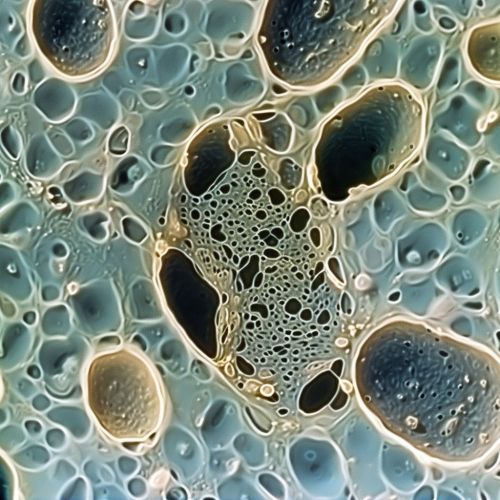Heterochromatin
Introduction
Heterochromatin is a form of chromatin that is densely packed and often found in regions of the DNA that are not transcribed. This type of chromatin is typically associated with the preservation of the structural integrity of the chromosome and the regulation of gene expression.
Structure
Heterochromatin is composed of DNA and proteins, primarily histones, which help to compact the DNA into a more condensed form. The DNA in heterochromatin is tightly wound around the histones, forming a structure known as a nucleosome. This compact structure is what gives heterochromatin its characteristic dense appearance under a microscope.


Types of Heterochromatin
There are two main types of heterochromatin: constitutive and facultative.
Constitutive Heterochromatin
Constitutive heterochromatin is always in a condensed state and is typically found at the centromeres and telomeres of chromosomes. This type of heterochromatin is essential for chromosome segregation during cell division and for maintaining the stability of the genome.
Facultative Heterochromatin
Facultative heterochromatin, on the other hand, can switch between a condensed and a more relaxed state, depending on the needs of the cell. This type of heterochromatin is often associated with the regulation of gene expression.
Function
The primary function of heterochromatin is to maintain the structural integrity of the chromosome and to regulate gene expression. By keeping certain regions of the DNA tightly packed, heterochromatin can prevent these regions from being transcribed, thereby controlling which genes are expressed and when.
In addition to its role in gene regulation, heterochromatin also plays a crucial role in maintaining the stability of the genome. By keeping the DNA in a condensed state, heterochromatin can protect the DNA from damage and prevent unwanted recombination events.
Role in Disease
Alterations in the structure or function of heterochromatin can lead to a variety of diseases. For example, mutations in genes involved in the formation of heterochromatin can lead to developmental disorders and cancer. Additionally, changes in the distribution of heterochromatin can result in genomic instability, which can also contribute to the development of disease.
